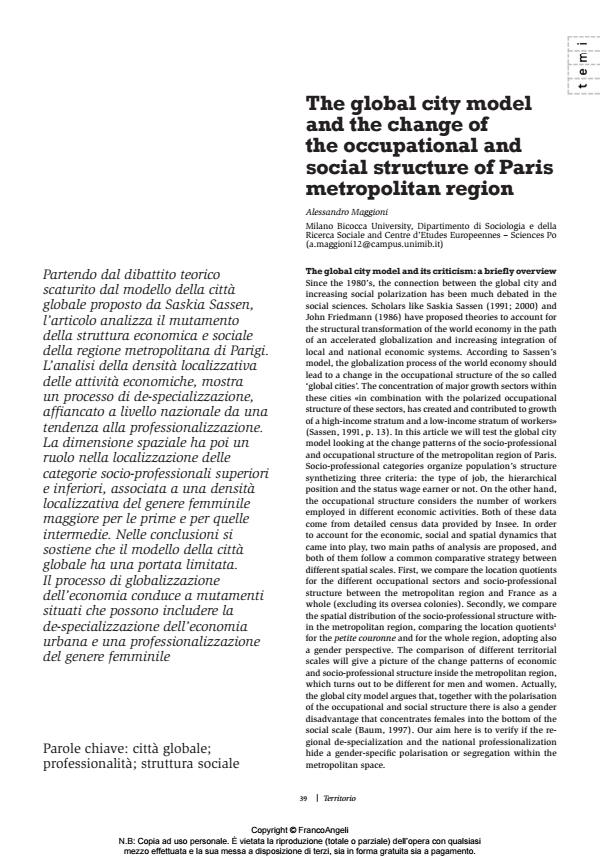The global city model and the change of the occupational and social structure of Paris metropolitan region
Titolo Rivista TERRITORIO
Autori/Curatori Alessandro Maggioni
Anno di pubblicazione 2015 Fascicolo 2015/73
Lingua Inglese Numero pagine 10 P. 39-48 Dimensione file 442 KB
DOI 10.3280/TR2015-073006
Il DOI è il codice a barre della proprietà intellettuale: per saperne di più
clicca qui
Qui sotto puoi vedere in anteprima la prima pagina di questo articolo.
Se questo articolo ti interessa, lo puoi acquistare (e scaricare in formato pdf) seguendo le facili indicazioni per acquistare il download credit. Acquista Download Credits per scaricare questo Articolo in formato PDF

FrancoAngeli è membro della Publishers International Linking Association, Inc (PILA)associazione indipendente e non profit per facilitare (attraverso i servizi tecnologici implementati da CrossRef.org) l’accesso degli studiosi ai contenuti digitali nelle pubblicazioni professionali e scientifiche
Partendo dal dibattito teorico scaturito dal modello della città globale proposto da Saskia Sassen, l’articolo analizza il mutamento della struttura economica e sociale della regione metropolitana di Parigi. L’analisi della densità localizzativa delle attività economiche, mostra un processo di de-specializzazione, affiancato a livello nazionale da una tendenza alla professionalizzazione. La dimensione spaziale ha poi un ruolo nella localizzazione delle categorie socio-professionali superiori e inferiori, associata a una densità localizzativa del genere femminile maggiore per le prime e per quelle intermedie. Nelle conclusioni si sostiene che il modello della città globale ha una portata limitata. Il processo di globalizzazione dell’economia conduce a mutamenti situati che possono includere la de-specializzazione dell’economia urbana e una professionalizzazione del genere femminile
Parole chiave:Città globale; professionalità; struttura sociale
Alessandro Maggioni, The global city model and the change of the occupational and social structure of Paris metropolitan region in "TERRITORIO" 73/2015, pp 39-48, DOI: 10.3280/TR2015-073006